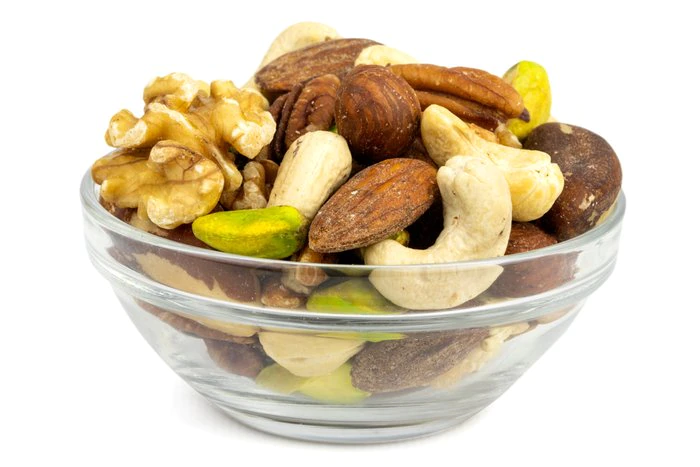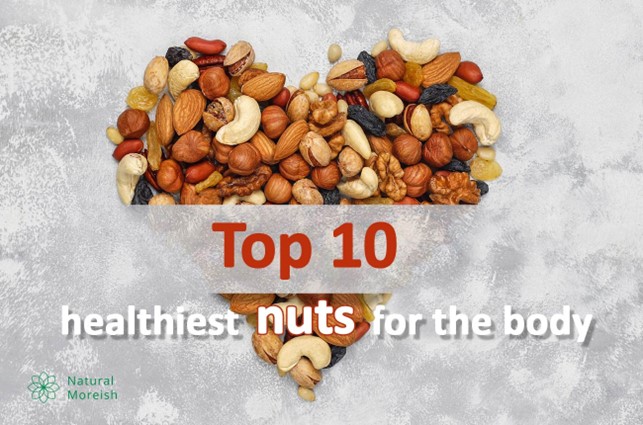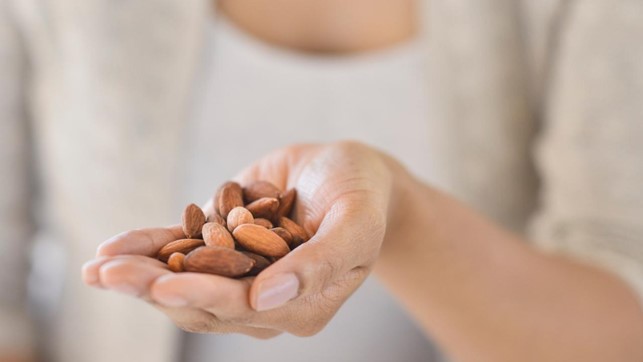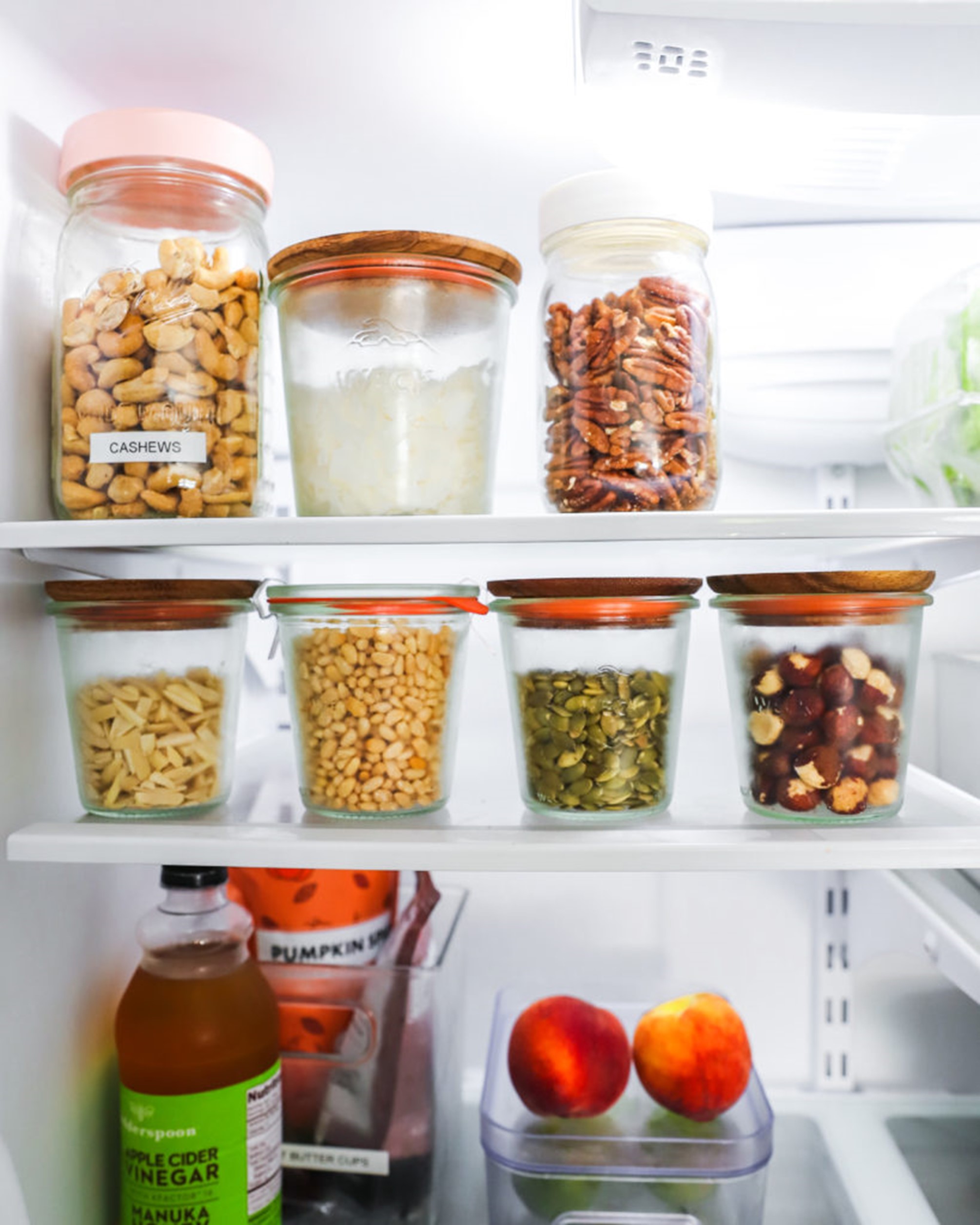Nuts that Promote and Protect Your Health
How lucky are we nut lovers, that nuts actually promote and protect our health? As a whole they’re an incredibly nutrient-dense food with amazing health benefits. Satiating, rich in protein, and a great source of healthy, plant-based fats eating nuts daily is a smart, simple, and delicious way to stay well.

As an avid nut enthusiast, I was excited to find information on this very topic on the great website, The Art of Anti-Aging: Your Best Years Start Now. Owner and author, Brian Vaszily gives details on what makes nuts so good for you, plus the 10 healthiest nuts you can eat.
As mentioned, most nuts are a great source of protein, and fat. They’re also fiber-rich. So besides helping you feel full and satisfied, nuts provide long-term energy. And because of this, research shows they can even help with weight loss or management.
In addition, nuts are rich in antioxidants, minerals, and omega-3 fatty acids that help keep your skin and heart healthy.

When the talk is on nuts-for-health, this means RAW nuts—not roasted or salted. These are yummy, for sure, but their health benefits are far less.
So, of the 20+ edible nuts out there, what are the 10 healthiest? It’s those that contain the most vitamin E, anti-oxidants, manganese, magnesium, iron, selenium, vitamin B6, vitamin B1, vitamin K, potassium, alpha-linolenic acid, and lutein and zeaxanthin. Here for your dining pleasure and good health:

ALMONDS (screaming high in vitamin E—the anti-aging vitamin)
WALNUTS (healthiest nut for the brain)
PISTACHIOS (a complete plant protein; lutein and zeaxanthin loaded—crucial eye protectors)
CASHEWS (rich in magnesium, a sleep, mood, and essential brain protector)
PECANS (rich in zinc, which protects immune functions)
HAZELNUTS (extremely rich in anti-oxidants)
BRAZIL NUTS (their selenium is critical to thyroid function and hormone balance)
MACADAMIA NUTS (a powerhouse in lowering LDL cholesterol levels)
CHESTNUTS (lowest nut in fat and bursting with vitamins and minerals)
PEANUTS (not a real nut, but rich in compounds that relieve stress and boost brain functions)
This all said, how many nuts should you eat per day? There’s no one-size-fits-all answer to this question, but most studies say 1- to 2-ounces per day (or at least 4- to 6-ounces per week) is a good range to achieve their full benefits. The exception to this is Brazil nuts—you want to eat just 2 or 3 per day because of their high selenium content.

Generally speaking, an ounce of nuts is about a handful. Depending on the size and weight of the nuts, an ounce is also the equivalent of around ¼ of a cup.
I’ll close with two cautions: First, while we love the taste of toasted nuts, it’s important to know that heat used during toasting can reduce their levels of antioxidants and vitamins. Toasting also damages some of their healthy fats.

Second, nuts require proper storage. If left in a cupboard or pantry or exposed to sun for any amount of time, their fats turn rancid, which gives the nuts a NASTY taste and smell. Store them in airtight containers either in the fridge or freezer, and they’ll stay fresh and tasty for months.

As an avid nut enthusiast, I was excited to find information on this very topic on the great website, The Art of Anti-Aging: Your Best Years Start Now. Owner and author, Brian Vaszily gives details on what makes nuts so good for you, plus the 10 healthiest nuts you can eat.
As mentioned, most nuts are a great source of protein, and fat. They’re also fiber-rich. So besides helping you feel full and satisfied, nuts provide long-term energy. And because of this, research shows they can even help with weight loss or management.
In addition, nuts are rich in antioxidants, minerals, and omega-3 fatty acids that help keep your skin and heart healthy.

When the talk is on nuts-for-health, this means RAW nuts—not roasted or salted. These are yummy, for sure, but their health benefits are far less.
So, of the 20+ edible nuts out there, what are the 10 healthiest? It’s those that contain the most vitamin E, anti-oxidants, manganese, magnesium, iron, selenium, vitamin B6, vitamin B1, vitamin K, potassium, alpha-linolenic acid, and lutein and zeaxanthin. Here for your dining pleasure and good health:

ALMONDS (screaming high in vitamin E—the anti-aging vitamin)
WALNUTS (healthiest nut for the brain)
PISTACHIOS (a complete plant protein; lutein and zeaxanthin loaded—crucial eye protectors)
CASHEWS (rich in magnesium, a sleep, mood, and essential brain protector)
PECANS (rich in zinc, which protects immune functions)
HAZELNUTS (extremely rich in anti-oxidants)
BRAZIL NUTS (their selenium is critical to thyroid function and hormone balance)
MACADAMIA NUTS (a powerhouse in lowering LDL cholesterol levels)
CHESTNUTS (lowest nut in fat and bursting with vitamins and minerals)
PEANUTS (not a real nut, but rich in compounds that relieve stress and boost brain functions)
This all said, how many nuts should you eat per day? There’s no one-size-fits-all answer to this question, but most studies say 1- to 2-ounces per day (or at least 4- to 6-ounces per week) is a good range to achieve their full benefits. The exception to this is Brazil nuts—you want to eat just 2 or 3 per day because of their high selenium content.

Generally speaking, an ounce of nuts is about a handful. Depending on the size and weight of the nuts, an ounce is also the equivalent of around ¼ of a cup.
I’ll close with two cautions: First, while we love the taste of toasted nuts, it’s important to know that heat used during toasting can reduce their levels of antioxidants and vitamins. Toasting also damages some of their healthy fats.

Second, nuts require proper storage. If left in a cupboard or pantry or exposed to sun for any amount of time, their fats turn rancid, which gives the nuts a NASTY taste and smell. Store them in airtight containers either in the fridge or freezer, and they’ll stay fresh and tasty for months.
 Alice Osborne
Alice Osborne
Weekly Newsletter Contributor since 2006
Email the author! alice@dvo.com
